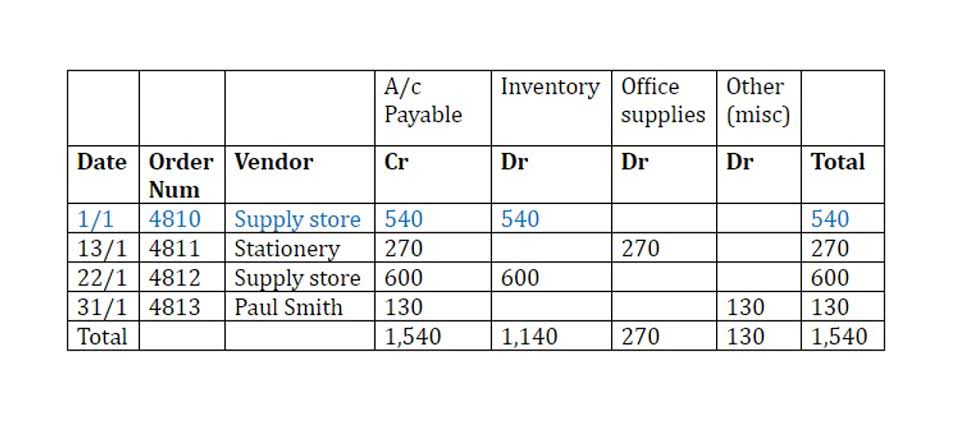
Knowing exactly how much cash is available helps determine when bills get paid or how quickly. The partner’s “capital account” measures the partner’s equity investment in the partnership. The “outside basis” measures the adjusted basis of the partner’s partnership interest. The distinction between inside and outside basis is foundational for understanding partnership taxation. This basis is adjusted for various factors, such as depreciation, improvements, and the sale of assets.

How Does a Partnership Differ From Other Forms of Business Organization?
Knowing the ins and outs of basis in a partnership is key to understanding each partner’s tax basis and the proper recognition of gains and losses. The determination of whether a debt is qualified nonrecourse financing for this de minimis rule is made without regard to the type of activity for which the debt is used. The rule allows the non-lender partners to continue being allocated basis from the nonrecourse loan owed to another partner (or partner affiliate) so long as the lender partner is predominantly a creditor rather than a partner.
What Types of Businesses Are Best-Suited for Partnerships?

A favorable de minimis rule (discussed earlier) may apply when partner affiliates make nonrecourse loans to a partnership or guarantee a partnership’s nonrecourse loan. Another significant aspect of outside basis is its impact on a partner’s ability to deduct losses. This limitation ensures that partners do not claim tax benefits for losses beyond their actual economic investment in the partnership.
- Earnings are distributed to each partner’s capital account from which distributions are charged against.
- Outside basis determines how much a partner may withdraw or deduct from a partnership for tax purposes without recognizing additional gain or without being limited on the allowable flowthrough of partnership losses.
- There is no federal statute defining partnerships, but the Internal Revenue Code (Chapter 1, Subchapter K) includes detailed rules on their federal tax treatment.
- Kelly Main is a Marketing Editor and Writer specializing in digital marketing, online advertising and web design and development.
- Conversely, when a partner sells their interest, the outside basis determines the gain or loss on the sale, while the inside basis remains unchanged unless a special election is made.
- Although it may not seem possible, the most common way this occurs is when the partnership takes on debt.
Limited Liability Partnership
These often include medical professionals, lawyers, accountants, consultants, finance & investing, and architects. When drafting a partnership agreement, an expulsion clause should be included, detailing what events are grounds for expelling a partner. Around the end of every tax season, the IRS publishes its annual “Dirty Dozen” list https://www.bookstime.com/ of common tax-related scams and abuses that unsuspecting taxpayers might encounter.
Cash accounting works well for many small businesses; however, if there is a concern over the health of the business and crucial details apart from cash flow, you should opt for a different accounting method. Creating a partnership can also make the day-to-day operations of a business more manageable than they would be if only one person were running things. Moreover, a shrewd partner can also provide additional perspectives and insights that can help the business grow.

This has the added benefit of not being subject to the same rules and regulations that apply to corporations and LLCs. However, every state except Louisiana has adopted one form or another of the Uniform Partnership Act, creating laws that are similar from state to state. The standard version of the act defines the partnership as a separate legal entity from its partners, which is a departure from the previous legal treatment of partnerships.
AVOIDANCE OF AT-RISK RULES

When the partnership finally sells the asset, the partnership will recognize a $3,000 gain so that B and C, in effect, recognize A’s share of the gain in the asset. This extra gain results in B and C’s recognition of a tax loss on the liquidation of the partnership (Sec. 731(a)(1)). Similarly, once a partner’s basis is zero, any additional allocation of losses is suspended until the partner has basis to offset the loss (Sec. 704(d)). So long as a partner has basis, distributions to the partner merely result in a reduction of his or her basis by the amount of money distributed or the basis of the property distributed. However, if a partnership chose to elect its partnership to Section 754, the new partner‚Äôs tax basis is partnership accounting ‚Äústepped up‚Äù to $260,000 instead of remaining at the original partner’s basis of $200,000. The new partner‚Äôs inside cost basis will remain at $200,000, requiring no adjustment.
When the partnership is formed, each partner should contribute cash or noncash property to the partnership, thus creating basis in the partnership. Going forward, income and further cash or noncash contributions increase a partner’s basis, and losses and distributions of cash or noncash property to a partner decreases a partner’s basis. To complicate matters, sometimes the income or loss is different when calculated using financial accounting (book) rules than when using tax accounting rules. ABC Partnership began operation in 2016; has reported income in excess of deductions for 2016, 2017, and 2018; and at the end of 2018 has nonrecourse debt secured by transportation equipment. If the partnership distributes $70,000 to Partner B, the at-risk basis is reduced to ($10,000), while CARES Act his tax basis is reduced to $10,000.

